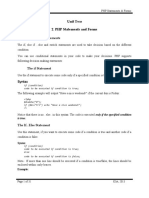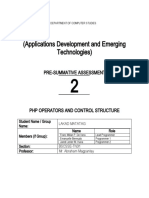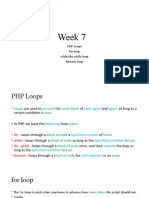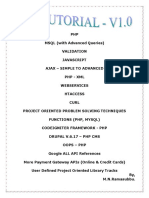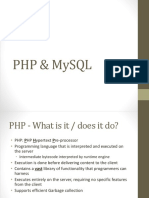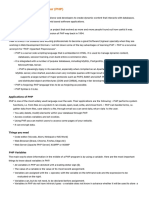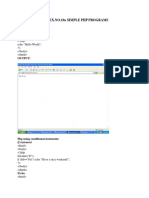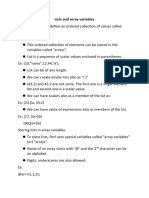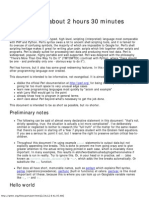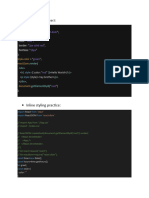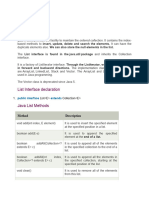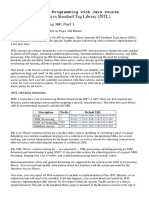0% found this document useful (0 votes)
98 views18 pagesCS8651 - IP - UNIT - IV - 3 - PHP Program Control - Decision Making
This document provides an overview of PHP and XML topics including:
- An introduction to PHP including variables, program control, functions, form validation, regular expressions, file handling, cookies, and connecting to databases.
- An introduction to XML including document type definition, XML schema, DOM, presenting XML, XML parsers and validation, XSL and XSLT transformation, and news feeds.
- PHP program control statements including if/elseif/else and switch statements for decision making.
- PHP loop types including for, while, do/while, and foreach loops.
- PHP break and continue statements for controlling loop execution.
Uploaded by
Durai samyCopyright
© © All Rights Reserved
We take content rights seriously. If you suspect this is your content, claim it here.
Available Formats
Download as DOC, PDF, TXT or read online on Scribd
0% found this document useful (0 votes)
98 views18 pagesCS8651 - IP - UNIT - IV - 3 - PHP Program Control - Decision Making
This document provides an overview of PHP and XML topics including:
- An introduction to PHP including variables, program control, functions, form validation, regular expressions, file handling, cookies, and connecting to databases.
- An introduction to XML including document type definition, XML schema, DOM, presenting XML, XML parsers and validation, XSL and XSLT transformation, and news feeds.
- PHP program control statements including if/elseif/else and switch statements for decision making.
- PHP loop types including for, while, do/while, and foreach loops.
- PHP break and continue statements for controlling loop execution.
Uploaded by
Durai samyCopyright
© © All Rights Reserved
We take content rights seriously. If you suspect this is your content, claim it here.
Available Formats
Download as DOC, PDF, TXT or read online on Scribd
/ 18



